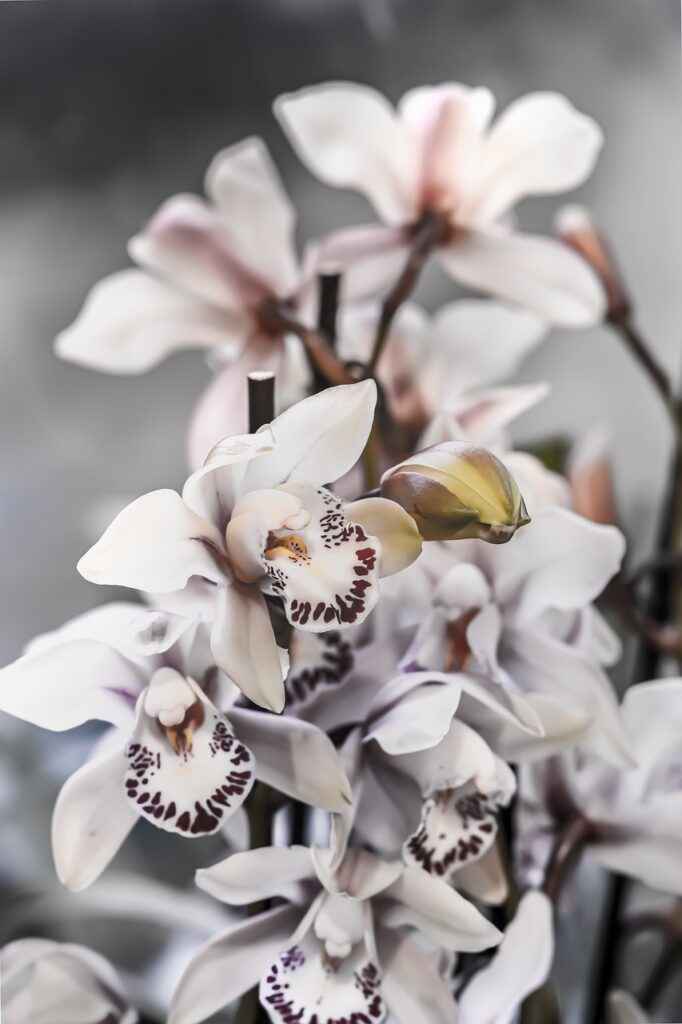Why the orchid does not bloom ?
When the orchid does not bloom, it causes a lot of trouble for its owner. You immediately wonder what you did wrong, can it be prevented? The main reasons why an orchid does not bloom are its poor care and cultivation errors.
Find out how to help the plant to decorate your home for as long as possible. Eliminate with us the bugs that prevent the orchid from blooming and enjoy beautiful flowers for a long time. Here are the top 5 reasons why an orchid doesn’t bloom!
1. The orchid does not bloom because it is trimmed incorrectly
Cutting plants incorrectly is one of the important reasons why an orchid does not bloom. In the case of orchids, like other plants, the inflorescences with blooming flowers should be trimmed. Pruning is based on trimming the shoots behind the third eyelet immediately after the orchid has faded. However, there are also exceptions to this rule.

Phalaenopsis orchids do not need shoot pruning. Phalaenopsis sprouts new buds on the same shoot, extending it. It happens that it sprouts side branches from one of the sleeping eyes.
In the case of phalaenopsis orchids, keeping the lower three eyes and cutting off the rest of the shoots can inhibit growth for a long time and prevent the orchid from blooming. If you see that the shoot is dying, it is better to wait until it dies completely and then trim it.
2. The orchid does not bloom because it is not fertilized
Orchids should be fertilized with orchid fertilizers available in specialized stores in accordance with the recommendations given on the packaging. Inadequate fertilization of plants is the most common reason why an orchid does not bloom. For most orchids, the ideal N: P: K ratio in the fertilizer is expressed as 2: 1: 3.
Mineral salts contained in fertilizers favorably influence the development of strong flower buds, and additionally prevent their premature fall. During the growing season, fertilize the plants once a week, and once a month during rest.
3. The orchid does not bloom because it has not been transplanted for a long time
The substrate from which the orchid extracts valuable nutrients loses its properties over time. Therefore, for the plants to be healthy and bloom nicely, you should replant them every 2-3 years. Without it, the orchid very often does not bloom.

When transplanting an orchid, carefully remove the plant from the pot, clean the roots of the old bark and remove their withered parts. Then let’s plant in a specialized orchid substrate. After transplanting, water the orchid very carefully so that any damaged roots have time to regenerate.
4. The orchid does not bloom because it has too little light
Insufficient light is a common reason why an orchid does not bloom. Orchids do best in warm and bright places. When displaying them on the windowsill, choose the optimal position, preferably the western window exhibition.
5. The orchid does not bloom because it is at the wrong temperature
As a general rule, room temperature is the correct temperature for many orchids. Orchids are perceived as tropical plants, so try to provide them with sufficiently warm conditions.
Despite this, many orchids do not bloom. Note that temperatures above 20 ° C all year round require few species. The exceptions are phalaenopsis or Vanda hybrids and some sabots.

Many plants of the Oncidiinae family prefer mild temperatures of 20 ° C all year round and a significant temperature drop at night. Similarly, species of the genus Katleja and Dendrobium have a distinct annual rhythm.
Dendrobium nobile is an extreme example: in summer it likes high temperatures and sun, in winter it prefers a very low temperature of 5-10 ° C, if you overwinter it in warmth, you will get side shoots instead of flower buds.
Plants of the genus Cymbidium also like low temperatures (12 ° C) in winter. Actually, the temperature drop at night should appear already in July, because it is it that determines flower buds.







